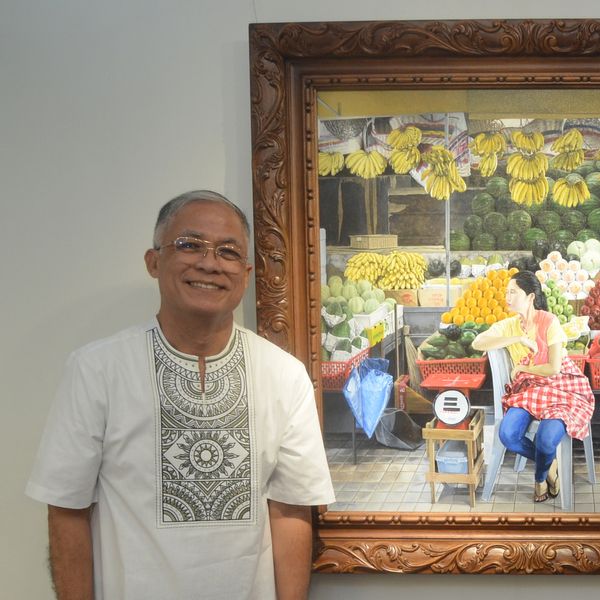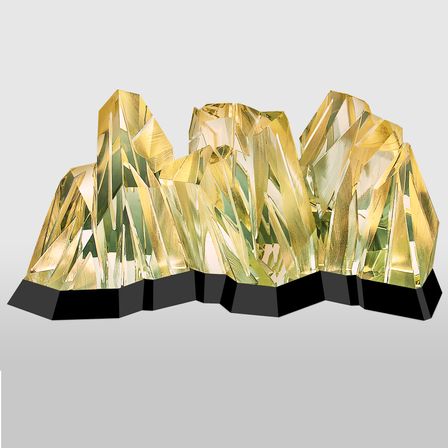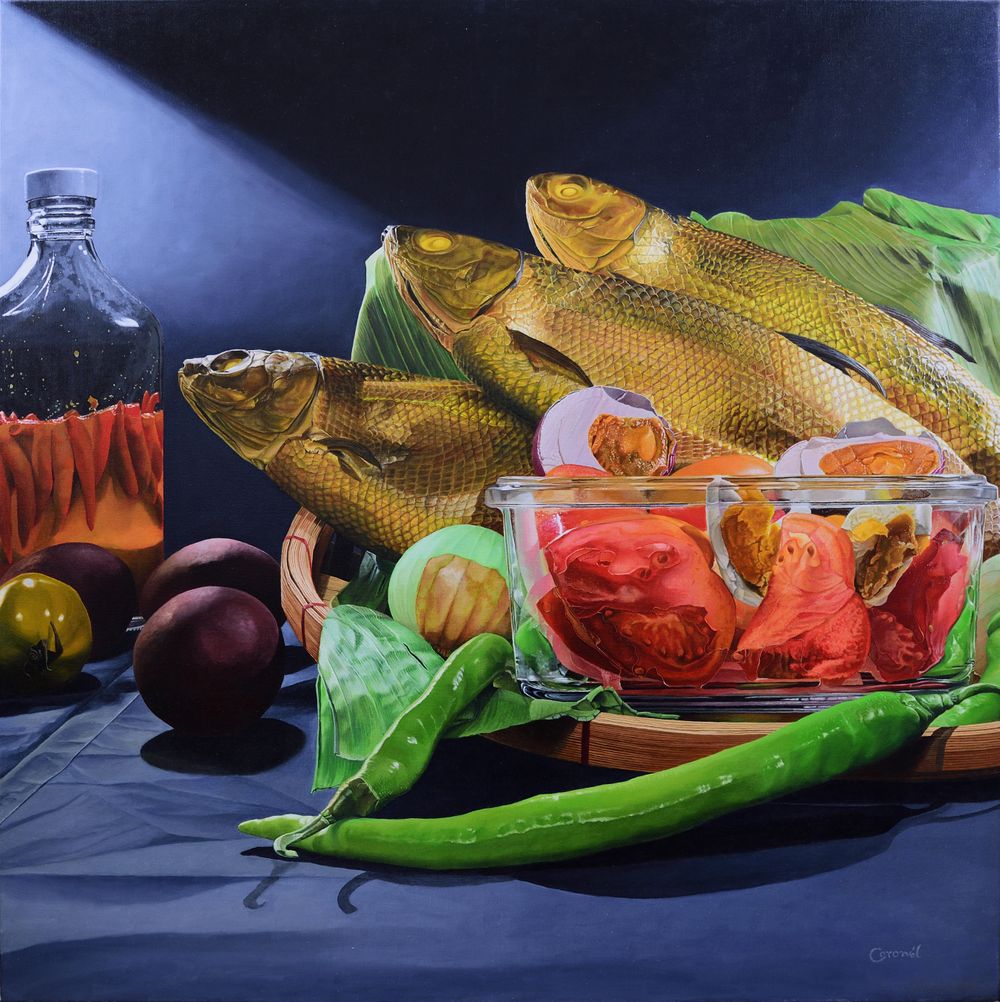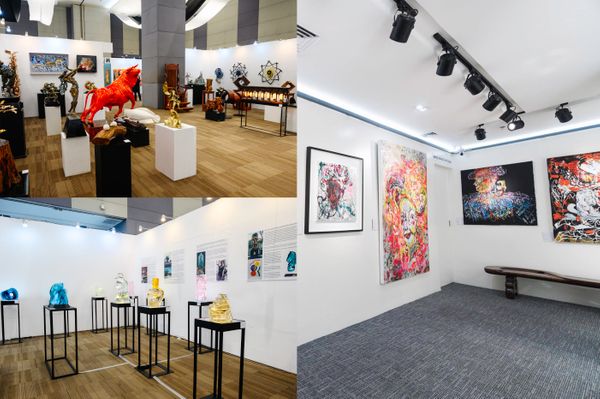
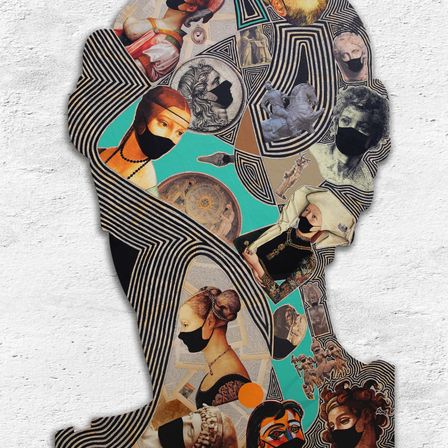
4 7 5fc0e362d9ba2915cc9663b1
1. "Thoughts"
Elmer Dumlao
Mixed media on coated cutout weatherproof board
44.7" x 72.4" inches
2020

4 8 5fc0e362d9ba2915cc9663b2
2. "Deeds"
Elmer Dumlao
Mixed media on coated cutout weatherproof board
44.7" x 72.4" inches
2020
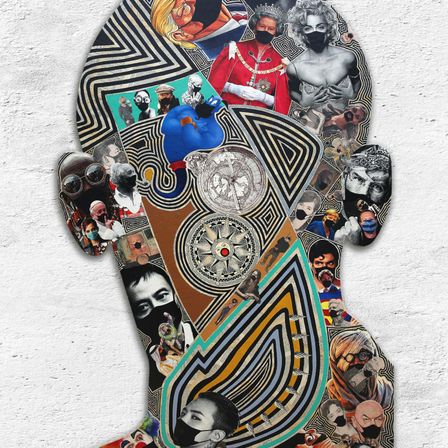
4 9 5fc0e362d9ba2915cc9663b0
3. "Words"
Elmer Dumlao
Mixed media on coated cutout weatherproof board
44.7" x 72.4" inches
2020

4 2 5fcaec40aabb22d8224a5846
1. "Kitty"
(orange)
Bell Sison
Colored chrome metal
2020
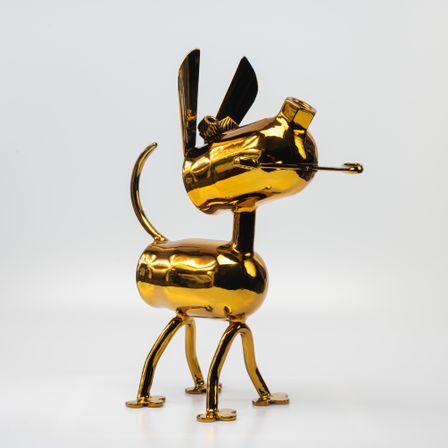
4 3 5fcaec40aabb22d8224a5847
2. "Odie"
(fetch)
Bell Sison
Colored chrome metal
2020

4 4 5fcaec40aabb22d8224a5848
3. "Mini Buster"
(standing)
Bell Sison
Colored chrome metal
2020
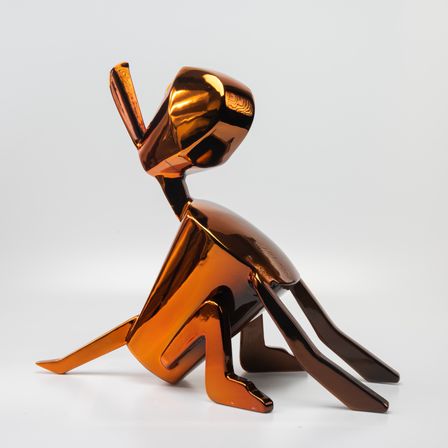
4 5 5fcaec40aabb22d8224a5849
4. "Mini Buster"
(sitting)
Bell Sison
Colored chrome metal
2020
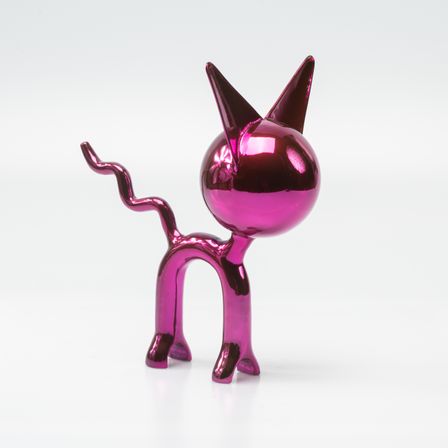
4 6 5fcaec40aabb22d8224a584a
5. "Kitty"
(pink)
Bell Sison
Colored chrome metal
2020

4 7 5fcaec40aabb22d8224a584b
6. "Mini Buster"
(leaning forward)
Bell Sison
Colored chrome metal
2020
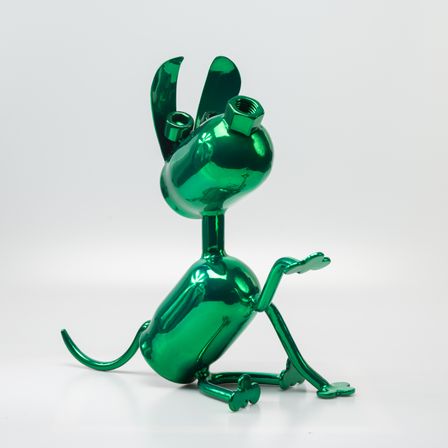
4 8 5fcaec40aabb22d8224a584c
7. "Odie"
(handshake)
Bell Sison
Colored chrome metal
2020
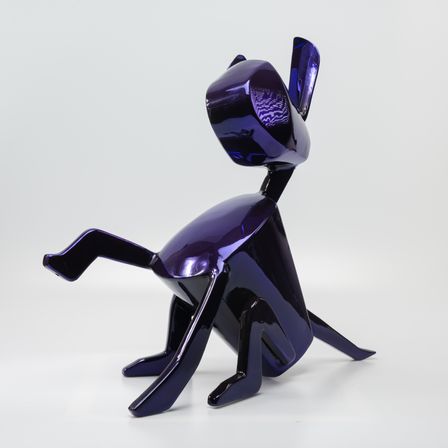
4 9 5fcaec40aabb22d8224a584d
8. "Mini Buster"
(handshake)
Bell Sison
Colored chrome metal
2020
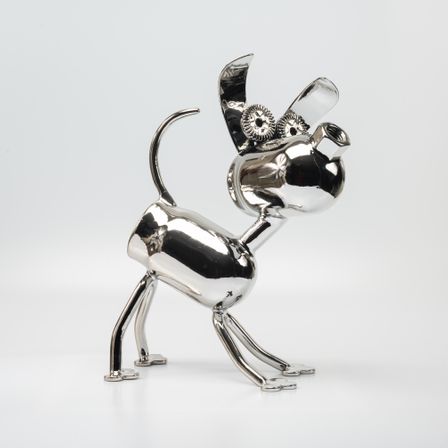
4 10 5fcaec40aabb22d8224a584e
9. "Odie"
(leaning forward)
Bell Sison
Colored chrome metal
2020
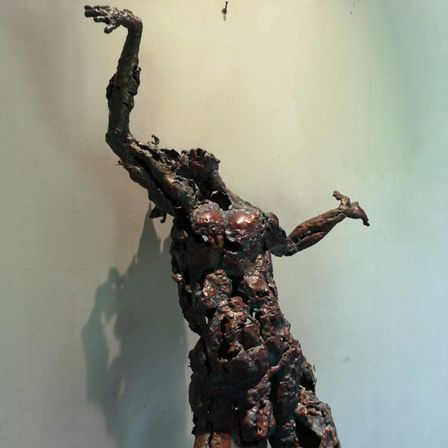
4 1 5fcb36afd3ea5fdf95df2fc2
1. "Rainmaker"
Carlito Ortega
Brass sculpture
2020
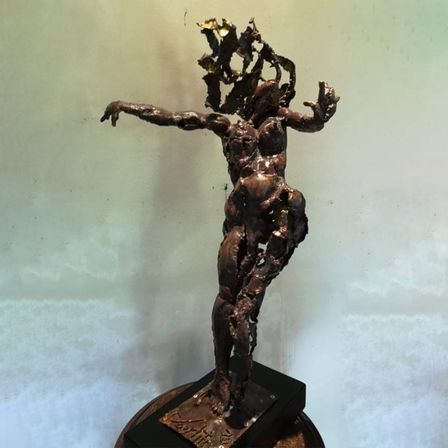
4 2 5fcb36afd3ea5fdf95df2fc3
2. "Juliana"
Carlito Ortega
Brass sculpture
2020
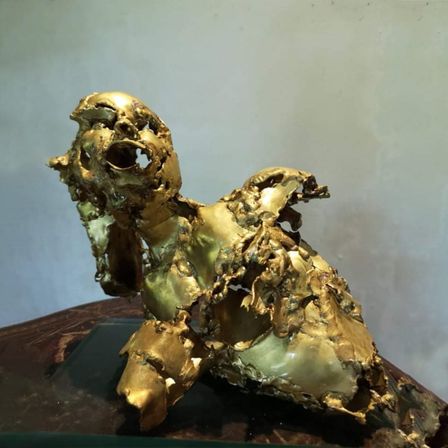
4 3 5fcb36afd3ea5fdf95df2fc4
3. "Grasia"
Carlito Ortega
Brass sculpture
2020
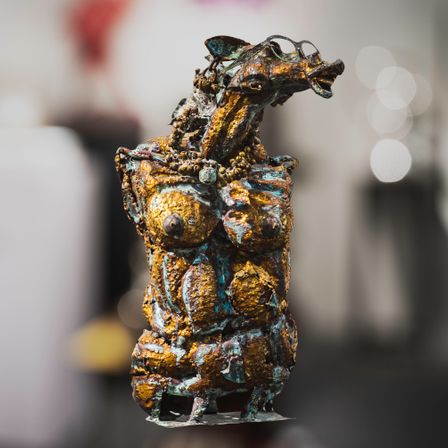
4 16 5f8187a22eb993307fed1ab9
4. "Mt. Kitanglad"
Carlito Ortega
Brass sculpture
39" x 12" x 12" inches
2019
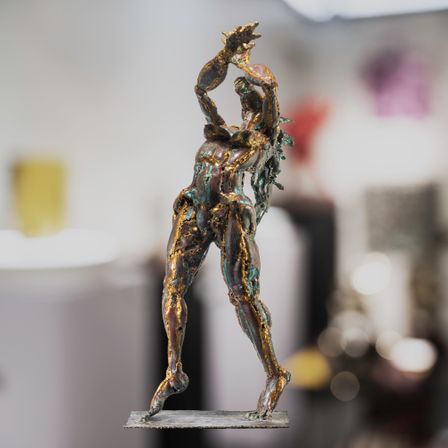
4 17 5f8187a22eb993307fed1ab6
5. "Mt. Matutum"
Carlito Ortega
Brass sculpture
44" x 18" x 17" inches
2019

4 1 5fcf8c2ba1c00a58e1f3aab9
1. "African Mask"
James Frani Dayrit
Stainless steel and aluminum
48 x 32 x 19 inches
2020
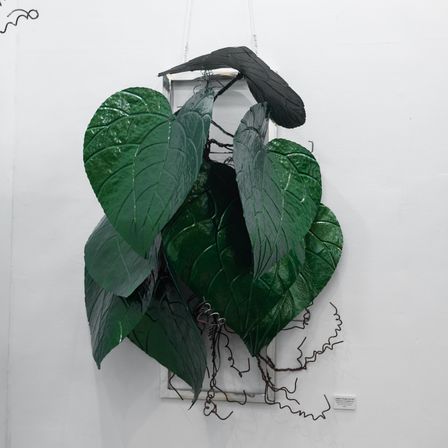
4 2 5fcf8c2ba1c00a58e1f3aaba
2. "Anthurium Crystallinum"
James Frani Dayrit
Stainless steel and aluminum
42 x 30 x 21 inches
2020
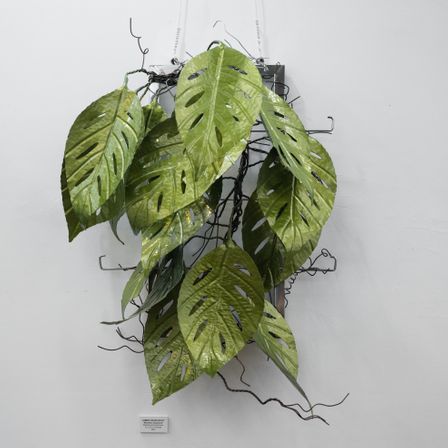
4 3 5fcf8c2ba1c00a58e1f3aabb
3. "Monstera Adansonii"
James Frani Dayrit
Stainless steel and aluminum
32 x 25 x 16 inches
2020
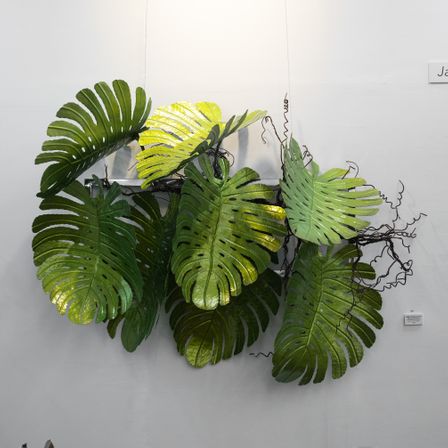
4 4 5fcf8c2ba1c00a58e1f3aabc
4. "Monstera Delisiosa"
James Frani Dayrit
Stainless steel and aluminum
40 x 51 x 21 inches
2020
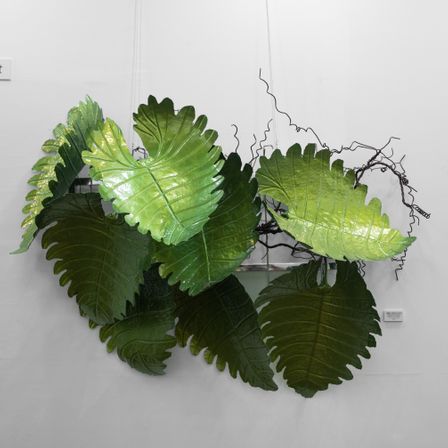
4 5 5fcf8c2ba1c00a58e1f3aabd
5. "Philodendron Evansii"
James Frani Dayrit
Stainless steel and aluminum
30 x 54 x 23 inches
2020
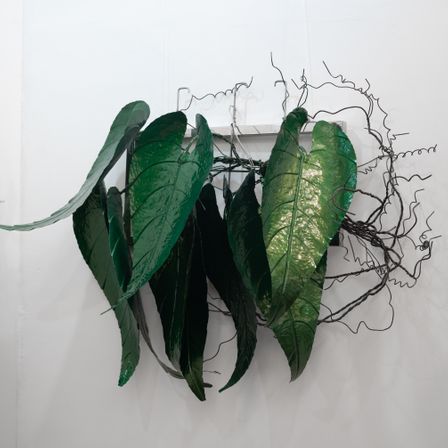
4 6 5fcf8c2ba1c00a58e1f3aabe
6. "Philodendron Melanochrysum"
James Frani Dayrit
Stainless steel and aluminum
30 x 42 x 13 inches
2020
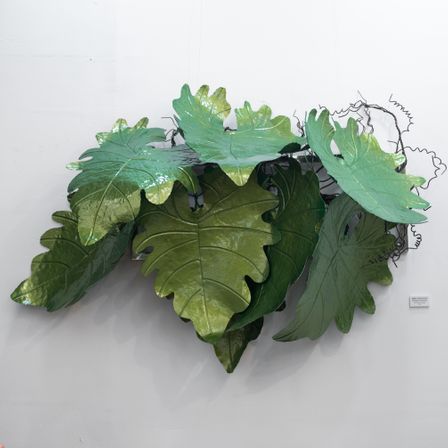
4 7 5fcf8c2ba1c00a58e1f3aabf
7. "Philodendron Revolution"
James Frani Dayrit
Stainless steel and aluminum
35 x 56 x 21 inches
2020
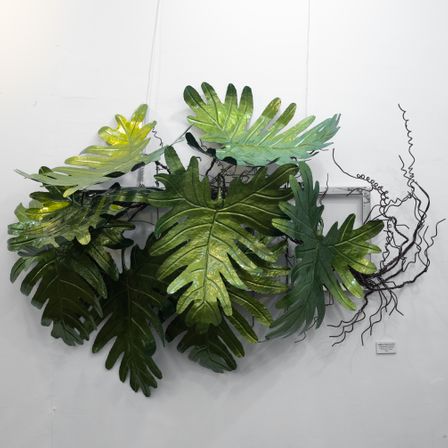
4 8 5fcf8c2ba1c00a58e1f3aac0
8. "Philodendron Xanadu"
James Frani Dayrit
Stainless steel and aluminum
39 x 52 x 21 inches
2020
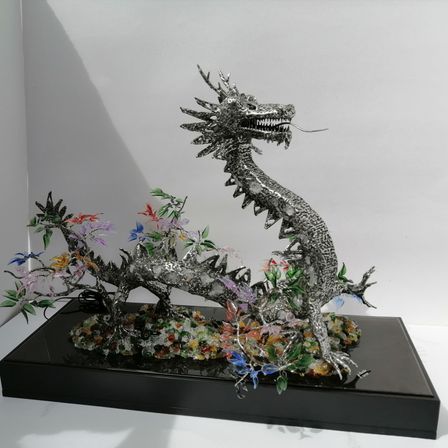
4 36 5fcb36afd3ea5fdf95df2fca
1. "Majestic Dragon"
Jinggoy Salcedo
Stainless steel and borosilicate Glass with uplight base
2020
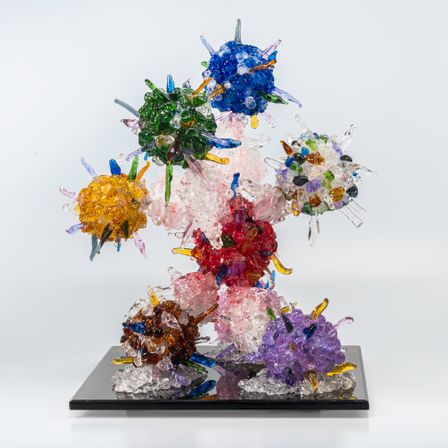
4 45 5f8187a22eb993307fed1aa9
2. "Keep Safe Everyone"
Jinggoy Salcedo
Borosilicate Glass
with uplight base
16" x 12" x 12" inches
2020

4 31 5fcb36afd3ea5fdf95df2fc5
1. "Legend of Odin, the Conqueror"
Richard Buxani
Brass and stainless steel
2020
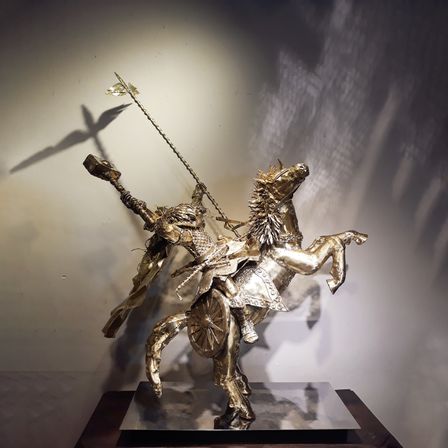
4 32 5fcb36afd3ea5fdf95df2fc6
2. "Odin the Victorious"
Richard Buxani
Brass and stainless steel
2020
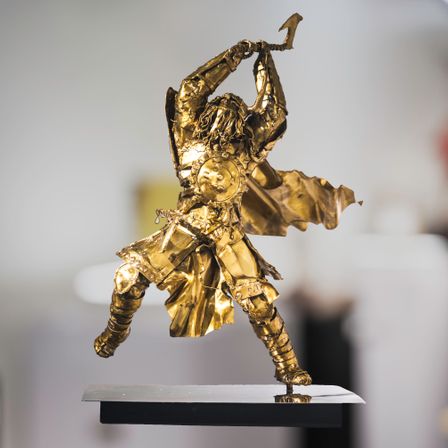
4 38 5f8187a22eb993307fed1ab3
3. "Skill"
Richard Buxani
Brass on stainless steel
22" x 16" x 15" inches
2020
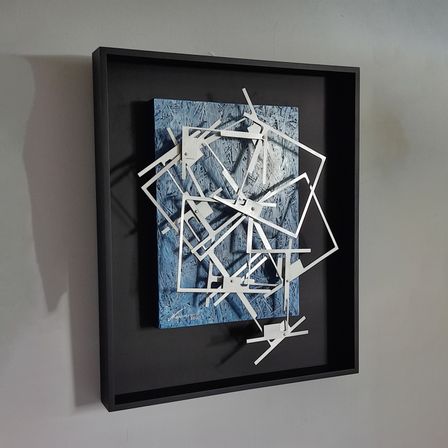
4 35 5fcb36afd3ea5fdf95df2fc9
1. "Brighter Side of Everything"
Jaime Nepomuceno
Polyurethane paint/acrylic/metal/wood chip board
23" × 27" inches
2020
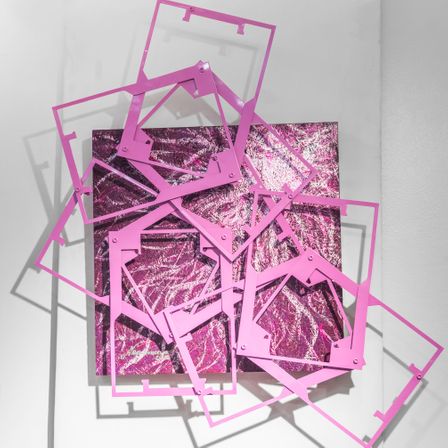
4 43 5f8187a22eb993307fed1aab
2. "Mother and Child"
Jaime Nepomuceno
Polyurethane paint/acrylic/
metal/wood chip board
30" x 33" inches
2020
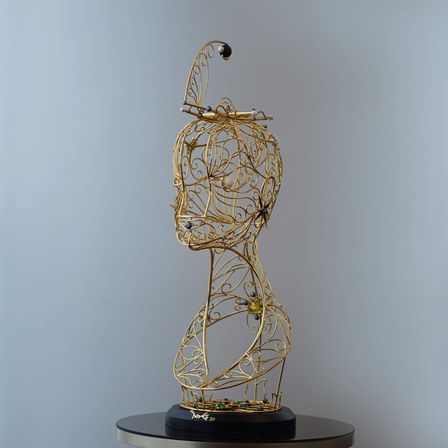
4 33 5fcb36afd3ea5fdf95df2fc7
1. "Persona: Oneiros Somnia"
Ivan Co
24k gold plated brass with sapphire, amethyst, aquamarine, prehnite, rosose quartz, onyx, white turquoise, and pearls
2020

4 34 5fcb36afd3ea5fdf95df2fc8
2. "Orbis: Under A Blanket of Stars"
Ivan Co
24k gold plated brass with blue topaz, green gold, white turquoise, onyx, tourmaline, onyx, jade, and pearls
2020
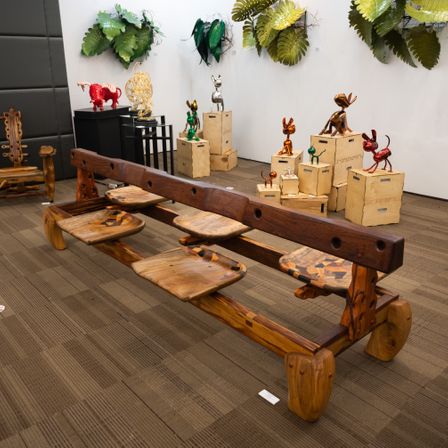
4 1 5fd21ead242aec9abcab8cc9
1. "Kalahati"
(Salong Puwet)
Agi Pagkatipunan
Molave, ipil, kamagong, dao,saplungan, yakal, balayong
31 x 42 x 115 inches
2020
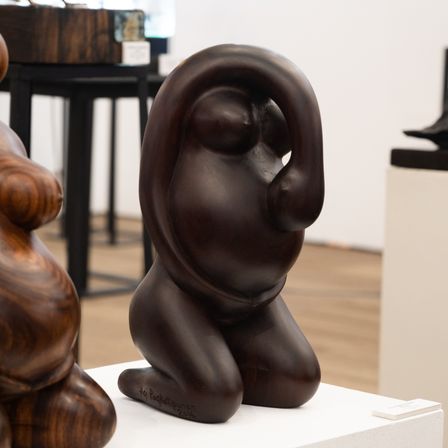
4 1 5fd21ead242aec9abcab8ccb
2. "Mahiyain"
Agi Pagkatipunan
Iron Wood
10 x 10 x 18 inches
2020
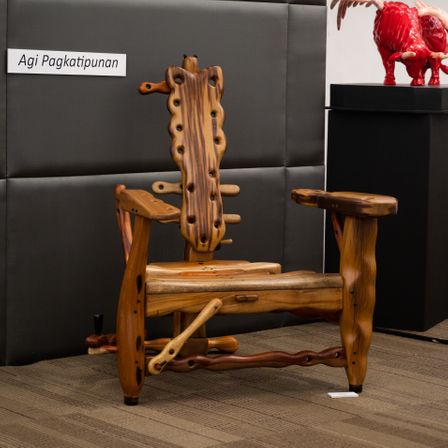
4 1 5fd21ead242aec9abcab8cca
3. "Pahiwatig"
(Salong Puwet)
Agi Pagkatipunan
Molave, ipil, kamagong, dao, saplungan, yakal, balayong
2020
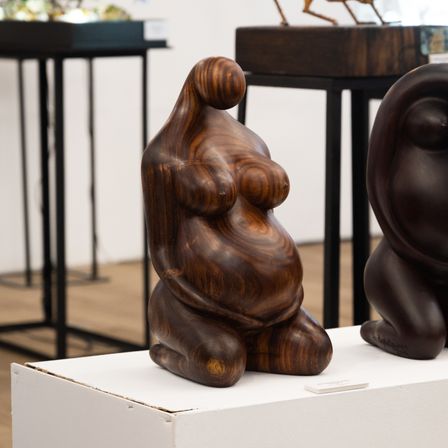
4 1 5fd21ead242aec9abcab8ccc
4. "Galawgaw"
Agi Pagkatipunan
Ipil
10 x 10 x 18 inches
2020
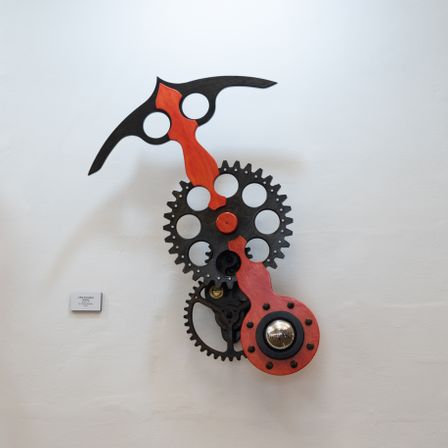
4 1 5fd21ead242aec9abcab8cd9
1. "Ballista"
Cris Eguaras
Kinetic Art
30 inches diameter
2020
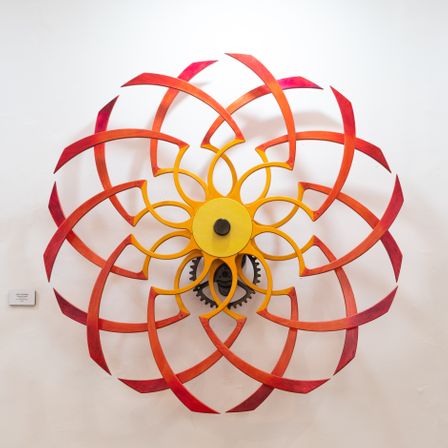
4 1 5fd21ead242aec9abcab8cd6
2. "Gerbera Orange"
Cris Eguaras
Kinetic Art
43 inches diameter
2020
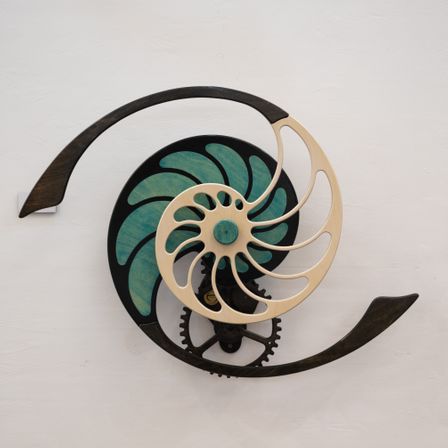
4 1 5fd21ead242aec9abcab8cd8
3. "Nautilus Blue"
Cris Eguaras
Kinetic Art
32 inches diameter
2020
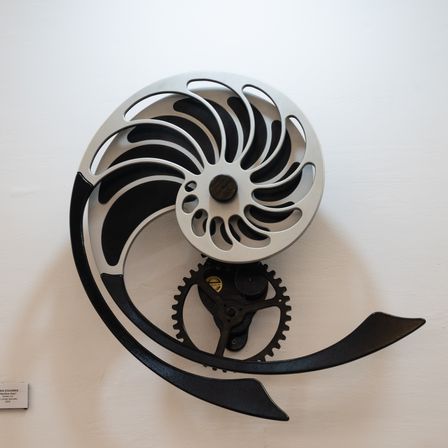
4 1 5fd21ead242aec9abcab8cd7
4. "Nautilus Gray"
Cris Eguaras
Kinetic Art
32 inches diameter
2020

4 1 5fd21ead242aec9abcab8cd0
1. "Thy Will Be Done"
Jik Villanueva
Brass
95 x 40 x 29 inches
2020

4 1 5fd21ead242aec9abcab8cd1
2. "Risen"
Jik Villanueva
Brass
92 x 27 x 11 inches
2020
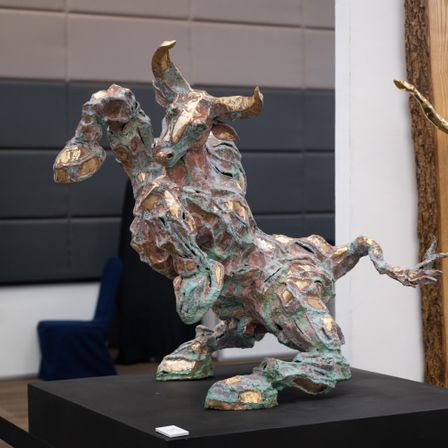
4 1 5fd21ead242aec9abcab8ccf
3. "Vigor"
Jik Villanueva
Brass
34 x 38 x 27 inches
2020
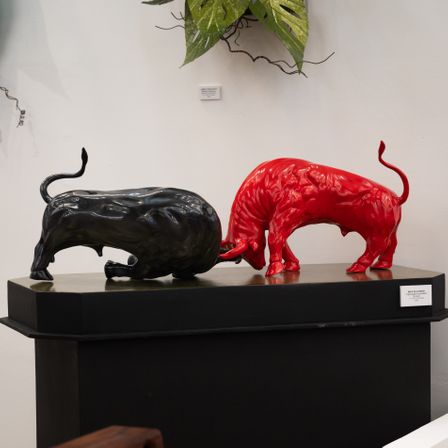
4 1 5fd21ead242aec9abcab8cd2
1. "Fighting Bull and Buffalo"
Mike Baldemor
Fiberglass
38 x 17 x 16 inches
2020
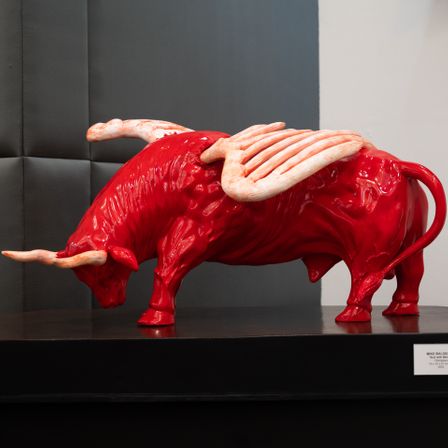
4 1 5fd21ead242aec9abcab8cd3
2. "Bull with Wings"
Mike Baldemor
Fiberglass
35 x 21 x 18 inches
2020

4 1 5fd21ead242aec9abcab8cc7
1. "Crown of My Time"
Adrian Jay Manuel
Brass on Wood Slab
51 x 20 x 13 inches
2020
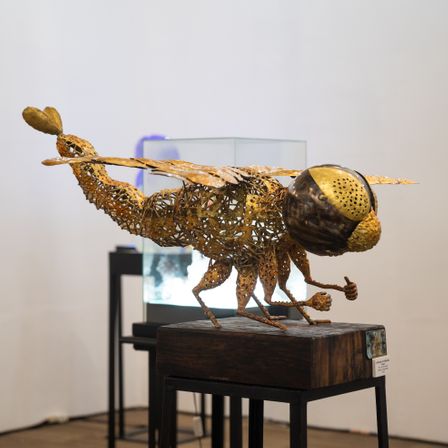
4 1 5fd21ead242aec9abcab8cc8
2. "Tutubi"
Adrian Jay Manuel
Brass on Wood Slab
20 x 34 x 32 inches
2020
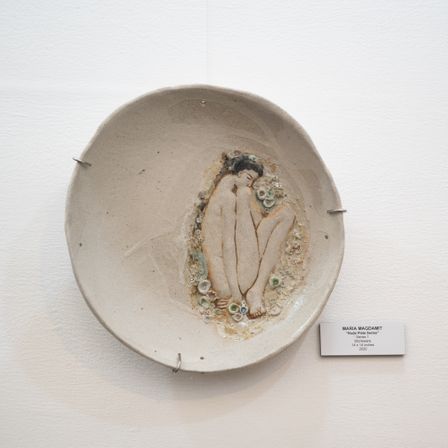
4 1 5fd21ead242aec9abcab8cd4
1. "Nude Plate Series 1"
Maria Magdamit
Stoneware
14 x 14 inches
2020
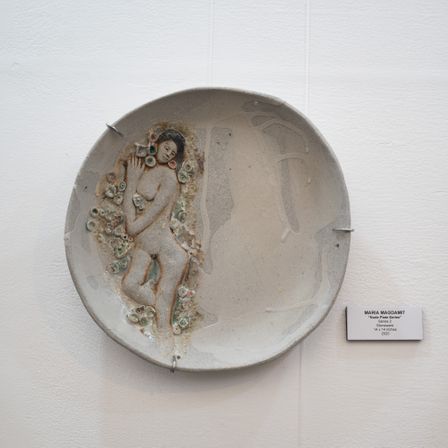
4 1 5fd21ead242aec9abcab8cd5
2. "Nude Plate Series 2"
Maria Magdamit
Stoneware
14 x 14 inches
2020
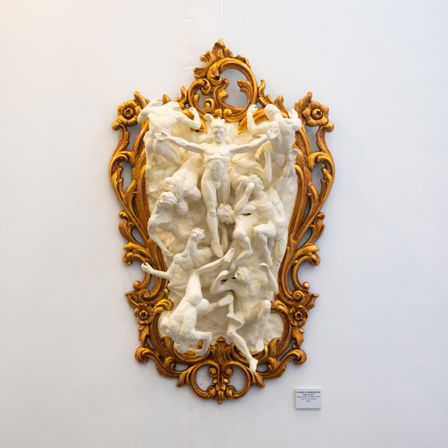
4 1 5fd21ead242aec9abcab8cc5
1. "High Places"
Glenn Cagandahan
Metal Epoxy on Steel Frame
34 x 21 x 6 inches
2020

4 2 5fd73e3b220dae6870b422a6
2. "Music, Love and Family"
Glenn Cagandahan
Metal Epoxy
28 x 30 x 15 inches
2020
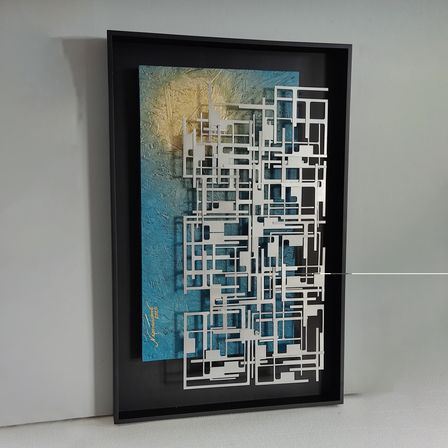
4 1 5fd7413ee886836907d877c5
1. "Sub Rosa Series"
Jaime Nepomuceno
Polyurethane Paint, Acrylic Paint, Metal, Shredded Wood Board
41 x 27 inches
2020

4 2 5fd7413ee886836907d877c6
2. "Move A Little Closer"
Jaime Nepomuceno
Metal reinforced Epoxy Clay, Polyurethane Paint Finish
12 x 12 x 21 inches
2020
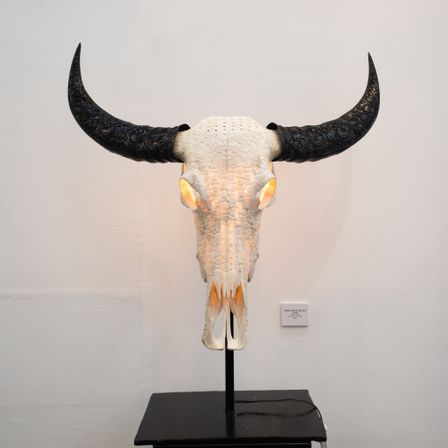
4 1 5fd21ead242aec9abcab8cc6
1. "Hinabi"
Danny Rayos Del Sol
Carved Skull
36 x 30 x 12 inches
2020
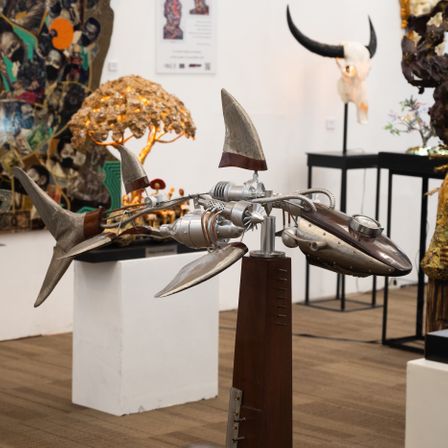
4 1 5fd21ead242aec9abcab8ccd
1. "X-Think Trex"
Arnel Borja
Metal, wood and acrylic
2020
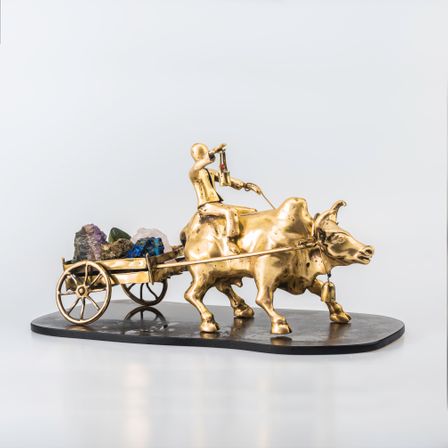
4 18 5f8187a22eb993307fed1ab7
1. "Mine"
Jik Villanueva
Brass and Semi precious stones
9" x 14" x 6" inches
2020
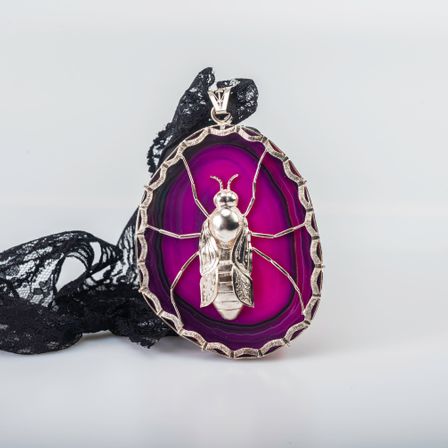
4 19 5f81af844c95423881df79c3
2. "Uraniidae"
Helena Alegre
Sliced agate pink
and 92.5 silver
4 1/2" (h) pendant
2020
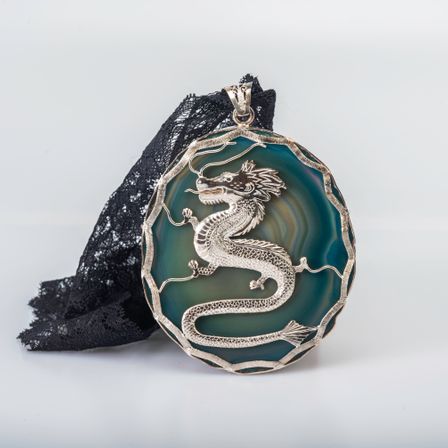
4 20 5f81af844c95423881df79c4
3. "Lucky Dragon"
Helena Alegre
Sliced agate blue
and 92.5 silver
4 1/2" (h) pendant
2020

4 21 5f92d9d262e44cedb4623434
4. "Mother and Child Origami"
James Frani Dayrit
Stainless steel
11" x 11" x 11" inches
2020
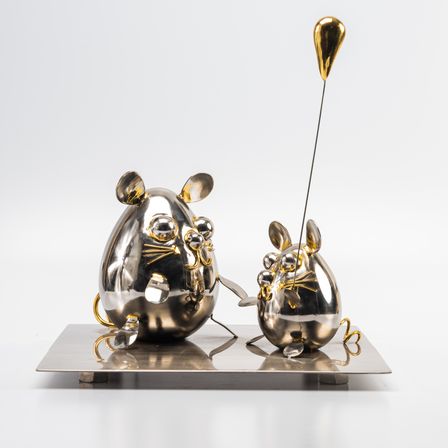
4 22 5f92d9d262e44cedb4623435
5. "Rat"
James Frani Dayrit
Stainless steel
12" x 12" x 12" inches
2020
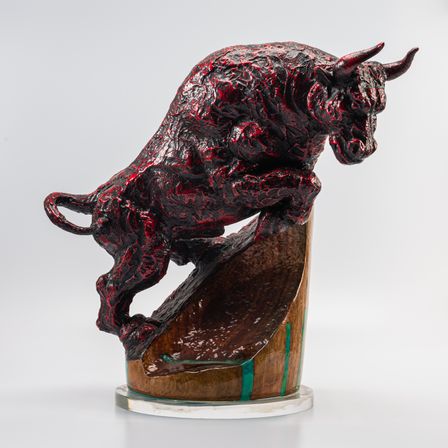
4 23 5f92d9d262e44cedb4623436
6. "Suwag II"
Merlito Gepte
Cast marble, wood and acrylic glass
18" x 20" x 12" inches
2020
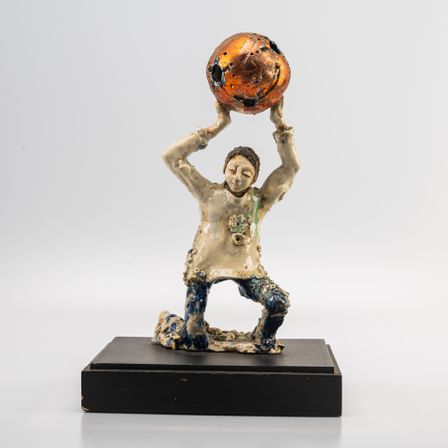
4 24 5f92d9d262e44cedb4623437
7. "Globe Man"
Maria Magdamit
Ceramic stoneware
10" x 10" x 16" inches
2018
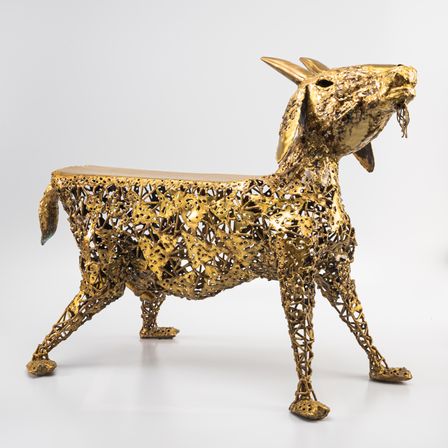
4 25 5f92d9d262e44cedb4623438
8. "Goat"
Adrian Jay Manuel
Brass foot stool
20" x 26" x 12" inches
2020
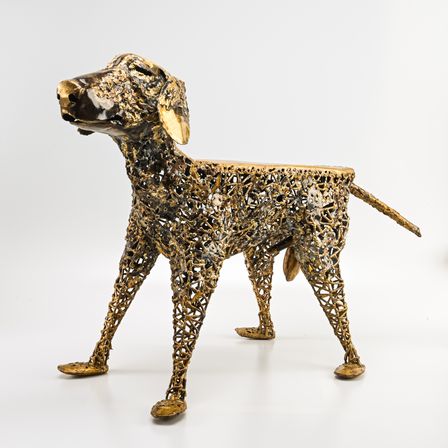
4 26 5f92d9d262e44cedb4623439
9. "Dog"
Adrian Jay Manuel
Brass foot stool
20" x 26" x 12" inches
2020
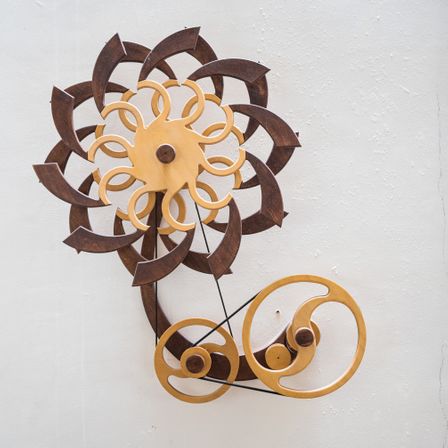
4 27 5f92d9d262e44cedb462343a
10. "Solaris"
Cris Eguaras
Kinetic Art wood
31" x 26" x 4" inches
2016
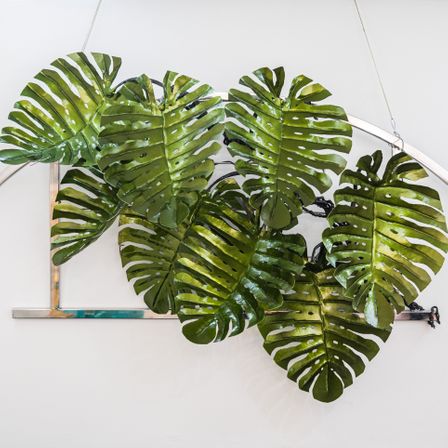
4 28 5f92d9d262e44cedb462343b
11. "Monstera Deliciosa"
James Frani Dayrit
Aluminum and stainless steel
34" x 48" x 18" inches
2020
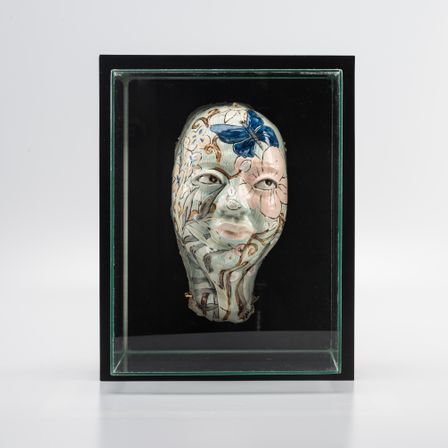
4 29 5f92d9d262e44cedb462343c
12. "Stories in the Garden Series"
Maria Magdamit
Stoneware on Glass Frame
6" x 12" x 14" inches
2020
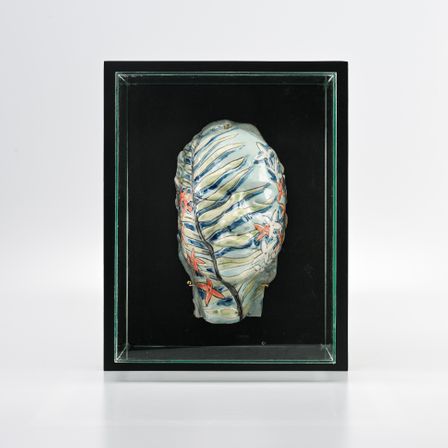
4 30 5f92d9d262e44cedb462343d
13. "Stories in the Garden Series"
Maria Magdamit
Stoneware on Glass Frame
6" x 12" x 14" inches
2020

4 31 5f92d9d262e44cedb462343e
14. "Stories in the Garden Series"
Maria Magdamit
Stoneware on Glass Frame
6" x 12" x 14" inches
2020

4 32 5f8187a22eb993307fed1ab4
15. "Stepping Up - 2019"
Ramon Orlina
Carved Green Glass
33 x 33 x 28 cm
2019
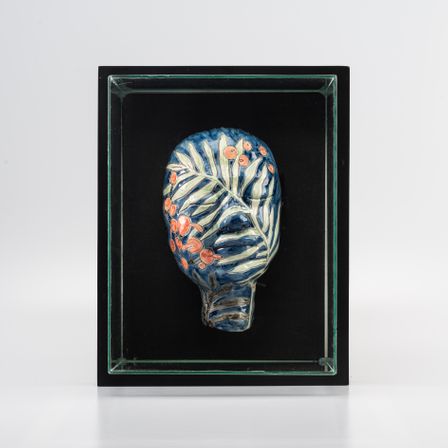
4 32 5f92d9d262e44cedb462343f
16. "Stories in the Garden Series"
Maria Magdamit
Stoneware on Glass Frame
6" x 12" x 14" inches
2020
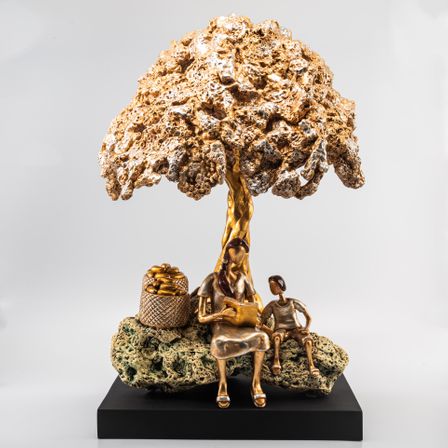
4 33 5f92d9d262e44cedb4623440
17. "Mother and Child"
Glenn Cagandahan
Wood, metal, epoxy clay and fiber glass
25" x 15" x 10" inches
2020
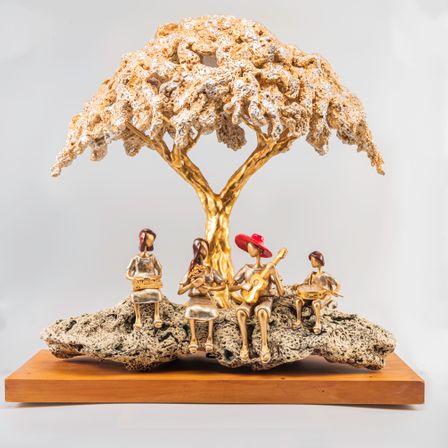
4 34 5f92d9d262e44cedb4623441
18. "Ang Musika ng Pagmamahalan"
Glenn Cagandahan
Wood, metal, epoxy clay and fiber glass
28" x 30" x 14" inches
2020
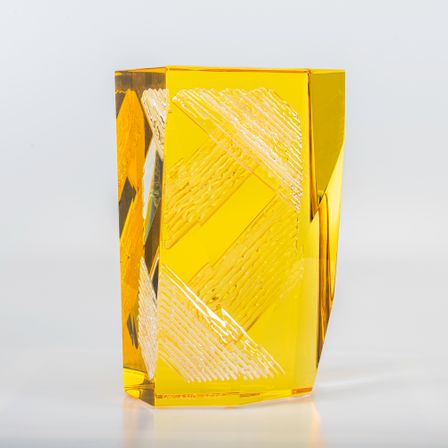
4 35 5f8187a22eb993307fed1ab0
19. "Glory in God"
Marge Organo
Optical Glass
10" x 6" x 4" inches
2020
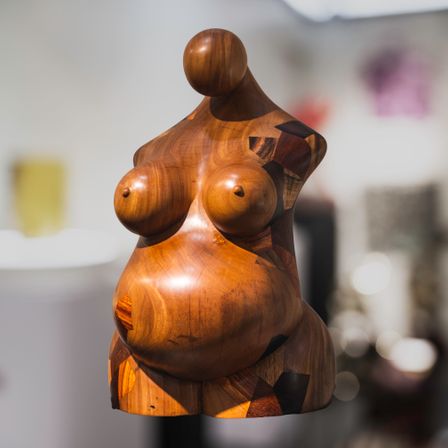
4 36 5f8187a22eb993307fed1ab1
20. "Mestisa"
Agi Pagkatipunan
Ipil, molave,
supa, kamagong
18" x 11" x 9" inches
2020
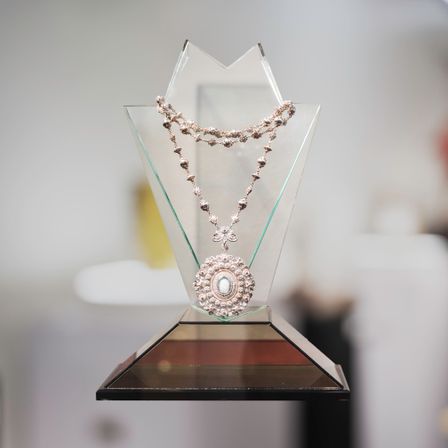
4 37 5f8187a22eb993307fed1ab2
21. "Maria Clara"
Helena Alegre
Opal natural gem stone
and 99.9 silver
2 1/2" (w) pendant with 18 1/2" tambourine necklace
2020
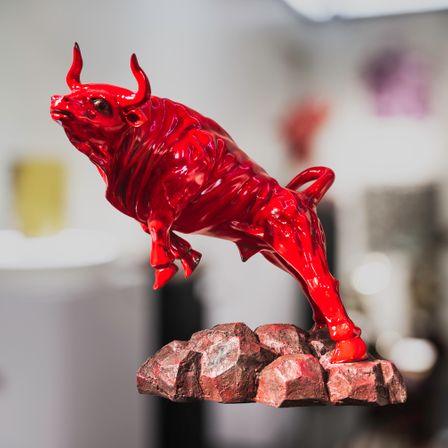
4 39 5f8187a22eb993307fed1aad
22. "Charging Bull"
Mike Baldemor
Fiber Glass
33" x 14" x 14" inches
2019
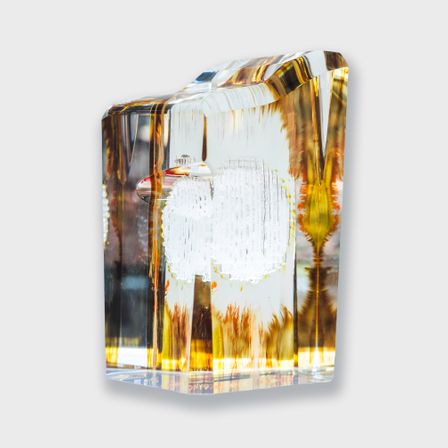
4 40 5f8187a22eb993307fed1aae
23. "Ray of Hope"
Marge Organo
Optical Glass
12" x 6" x 4" inches
2020

4 41 5f8187a22eb993307fed1aaf
24. "Sakura"
Myra Molina
Borosilicate glass,
brass, copper
13" x 9" x 16" inches
2020
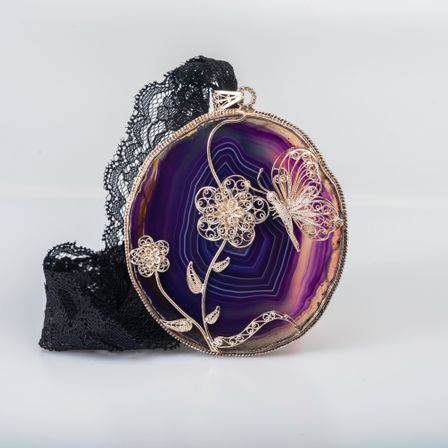
4 42 5f8187a22eb993307fed1aaa
25. "Lepidoptera on Hibiscus"
Helena Alegre
Sliced Agate Purple
and 92.5 silver
4 1/2" (h) pendant
2020

4 44 5f8187a22eb993307fed1aac
26. "Metalscape"
Sam Penaso
Metal
24" x 24" inches
2020
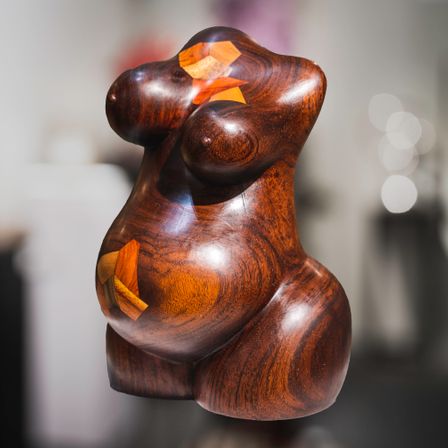
4 46 5f8187a22eb993307fed1ab5
27. "Negra"
Agi Pagkatipunan
Ipil, molave, balayong,
supa, kamagong, dao
14" x 10" x 9" inches
2020

"The Apocalypse"
Romulo Galicano
Oil on Canvas
96" x 60" inches
2020
The Apocalypse (2020) is the artist's visual chronicle of the events of this unprecedented year in modern times. Depicting all that is unspeakable, he interprets the biblical Armageddon with the four horsemen harbinging natural catastrophe, human greed, destructive technology and death. A volcano erupts, forests burn, ash plumes obscure the sky, thunderous clouds blot out the sun and an ominous sphere is glimpsed at the end of a lightning bolt. On the ground, man and beast seem to pay no heed but take respite in their ambulant shelter, the scorched earth and the war waged in the skies already a mundane panorama. At the pinnacle of the trigonal composition is the figure of the Christ, a silhouette in serene pastel tones, his calm radiance faint in the skies. Everything that could happen has. Man holds his ground and shakes the weariness off his bones. The masked father plays with a small pup. All their worldly possessions fit on a cart but there is room for tenderness and caring even towards their four-legged companions. Even as the earth burns, plants thrive in unexpected places. There is hope. This is the year 2020 as memorialized by the greatest realist painter of our generation.
The work is part of a series chronicling contemporary events that the artist started as a legacy project in 2011. The first piece "Siete de Agosto: Allegory of a Farce," also known as "Death of the National Artist", was a critique of the attack art was suffering in the hands of politicking forces and the ensuing societal chaos. 2014's "Triumph of Life Over Death" was a tribute to the victims of Typhoon Yolanda and extolled the heroism of the Filipino in times of devastating tragedy. Meanwhile, 2017 saw "The Modern Holocaust", his rendition of the "Maguindanao Massacre" which was a politically-motivated slaughter of journalists which shocked the world and headlined the Philippines as one of the most dangerous countries in the world. In 2019, the artist presented Nostradamus Prophecies (Ominous), an eerily-prophetic depiction of a ravaged earth brought about by nature's destruction. These works seemingly culminate with the current "The Apocalypse 2020".
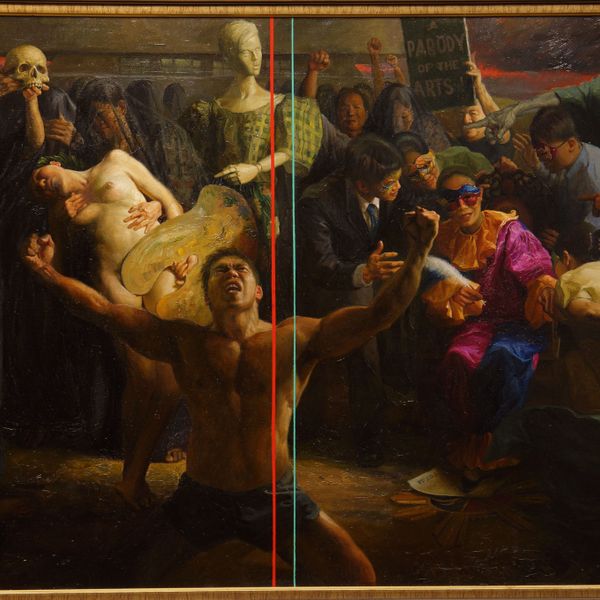
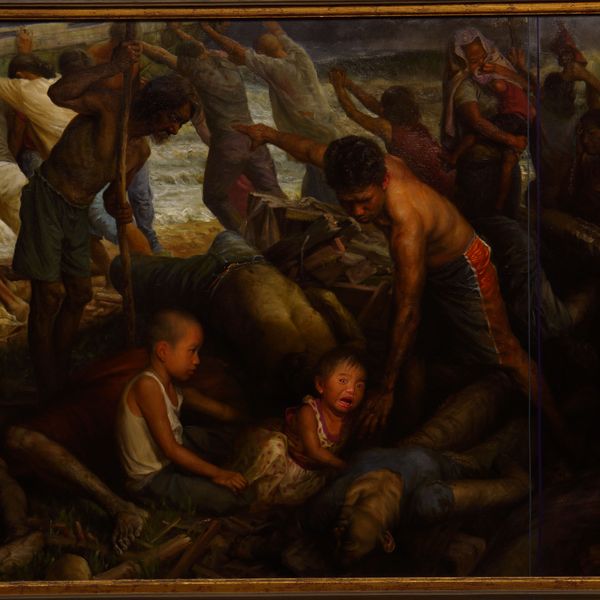
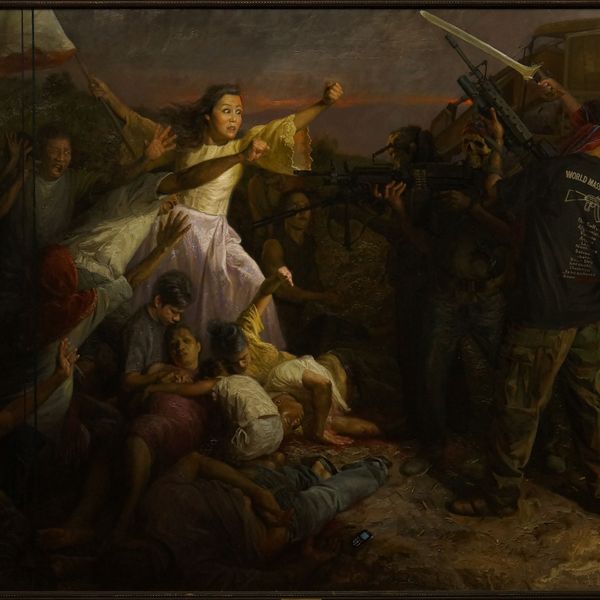
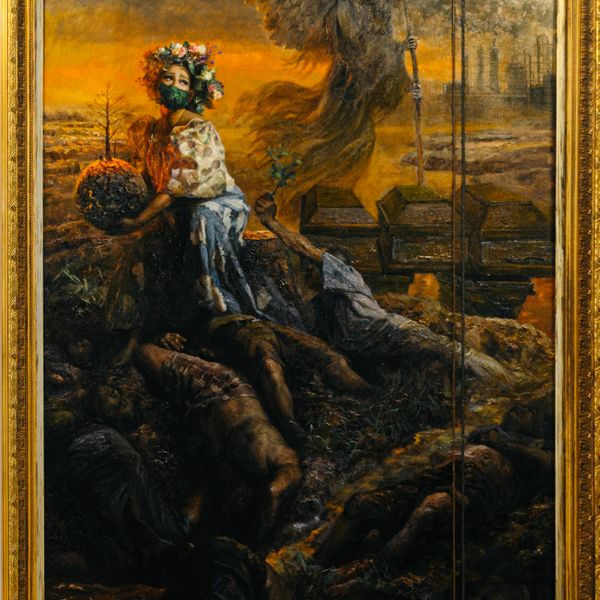
Renowned portrait artist Romulo Galicano, P. S. S. is the only Filipino conferred with Signature Status by the Portrait Society of America, offered only to portraitists of the highest caliber. He describes his style as technically academic and philosophically abstract; classical portraiture techniques are disrupted by lines across a landscape: “It is a reconciliation between two separate poles, the subjective and objective, to create another form of art,” as he puts it. “Do not look at a realistic painting in terms of just some of its elements. Look at it as a whole: look at the pattern, the movements, the oneness, its harmony in the lines and movement.”
Though most sought-after for his portraits, some of Galicano's most significant works have tackled social realist themes, from his previous works in ManilART that memorialized the Maguindanao Massacre and Typhoon Haiyan, as well as the looming realities of war and climate change. These are done in his unmistakable masterful realist execution, drawing from biblical and mythological allegory. In light of current events in the nation and the world at large, his works have been observed to have an almost-prophetic quality to them; his most recent work was already in its inception before the COVID-19 pandemic started. For the artist, this series forms part of his legacy in both documenting and commentating on history unfolding in his times.
In The Apocalypse (2020), we see the dynamic movements Galicano so aptly described; our eyes are drawn to the foreground–-a family and their companions trying to distract themselves from the grim reality surrounding them. We are also led to look above, to the skies, where four horsemen are at war. This is the artist's take on the perversion of science and progress by greed and self-gain, with heavy religious undertones. The dominant horseman with robotic features represents destructive science, surrounded by an alligator-like horse symbolizing corruption, a horse harbinging natural catastrophe, and a personification of death itself ready to strike lightning. "Kapag greed na ang umiiral, nag-iimbento na sila para sa destruction ng ibang tao, kagaya ng nuclear bombs at chemical warfare," explains Galicano. At the uppermost, we see a faint silhouette of Jesus watching over: “My inspiration was to place emphasis on a return to the Lord and our spiritual obligations, pagbalik sa kapaniwalaan at pananalig natin.”
In the foreground, the family scrambles in a pushcart with their meager possessions, seemingly in a period of respite playing with their four-legged companions. But the coast will never be clear–-directly above them, the heavens wage war, and if one looks closely, the silhouette of the COVID-19 virus can be seen in the skies.
Not immediately visible is Taal volcano at the right side; Galicano mentions that the “clouds” are in fact ash formations from its eruption early this year, January 12, 2020–-it claimed the lives of 39 people, displaced thousands in the area, and caused a halt in many sectors, including hundreds of millions of damage in agriculture.
Finally, there is a smattering of greenery just beyond the horizon. This was Galicano’s last addition in the painting process; it is a subtle yet poignant reminder of growth and hope. Galicano’s consistent social commentaries drive the point home that art’s place is in situating our real-world contexts, not just for academic study nor aesthetic value. We are at the cusp of widespread change affecting all sectors, but not all is lost. Brave citizen initiatives and acts of kindness bloom even in our most dreary days; is up to our actions today to move towards a livable future.
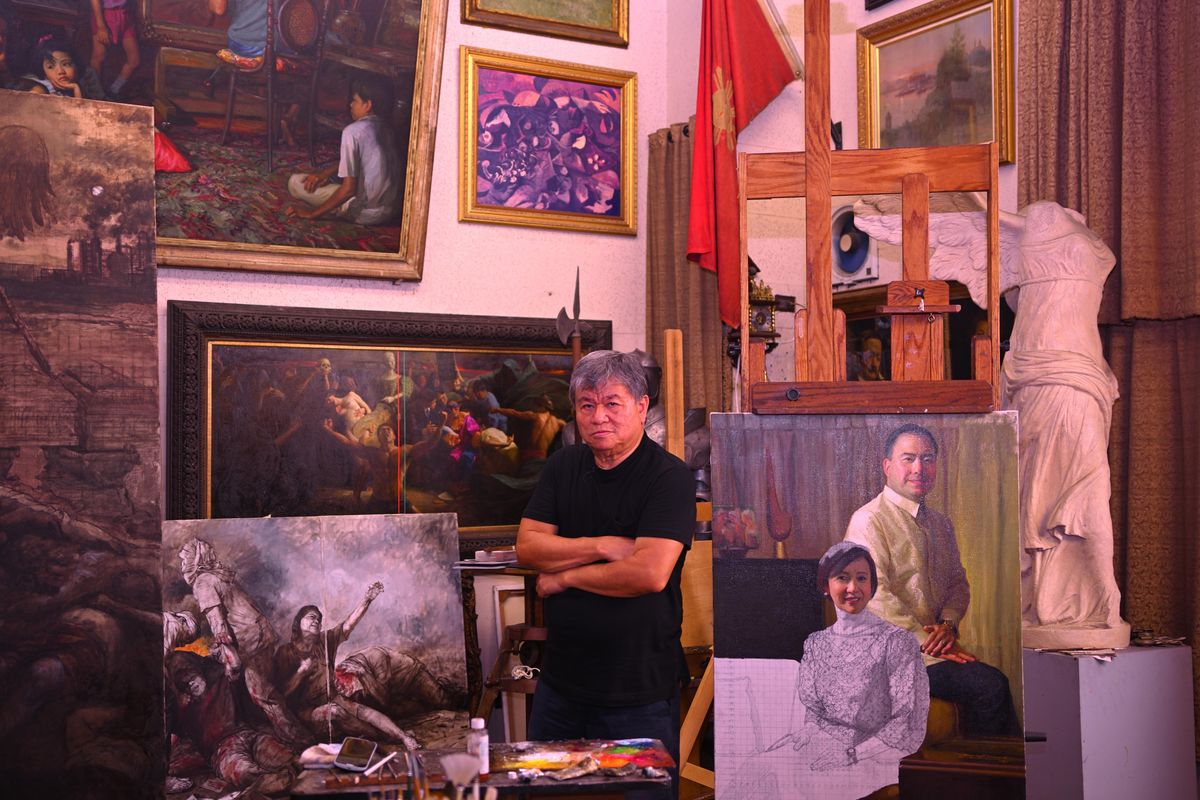
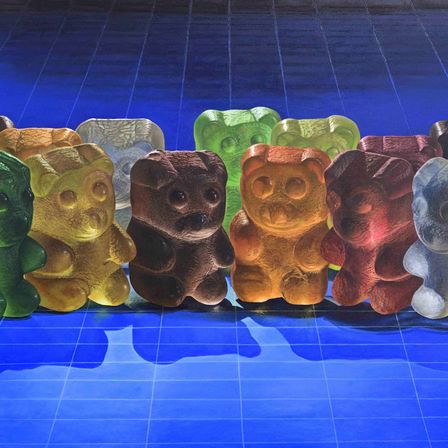
5 1
1. "Diversity"
(First Prize, American Art Awards-Pop Art Category 2020)
Ed Coronel
Oil on canvas
3' x 4' feet
2020
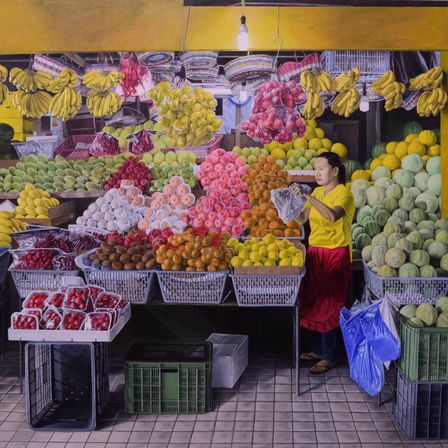
5 2
2. "Fruit Vendor 1"
(A Still Life of 1025 Fruits)
Ed Coronel
Oil on canvas
3' x 3' feet
2020
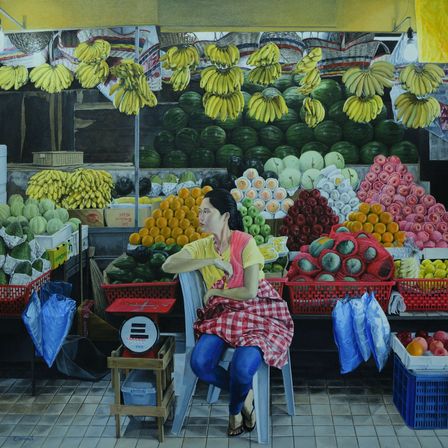
5 3
3. "Fruit Vendor 2"
(A Still Life of 725 Fruits)
Sixth Prize, American Art Awards 2019 Best Landscape with Life Category
Ed Coronel
Oil on canvas
3' x 3' feet
2020

5 4
4. "Still Life"
(Tinapa, Itlog na Pula, Kamatis, Siling-Paksiw, Sibuyas)
Ed Coronel
Oil on canvas
3' x 3' feet
2020

5 5
5. "Still Life"
(Tinapa, Sukang May Sili, Itlog na Pula, Kamatis, Siling-Paksiw, Sibuyas)
Ed Coronel
Oil on canvas
3' x 3' feet
2020
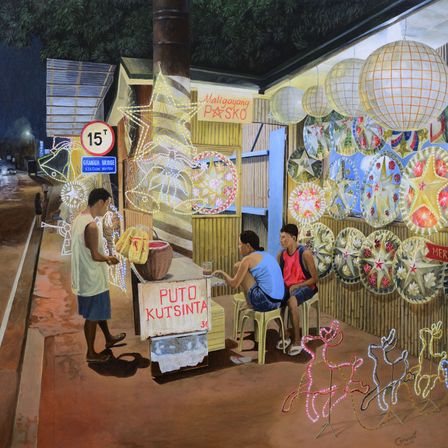
5 6
6. "Mga Parol Vendor sa Granada Bridge, San Juan"
Ed Coronel
Oil on canvas
3' x 3' feet
2020
Ed Coronel is a self-taught visual artist since childhood, but he is equally inspired by science. He graduated as a physicist and taught at the University of the Philippines-Diliman. His professional career in the arts began in 2006, where he started his roots in abstractions and social realism. Upon his latest solo exhibition in 2019, he veered towards realism, with methods much more deliberate and calculated. His background in the sciences lent him the precision for a specialization in realism, and earned him last year’s 6th place in the American Art Awards 2019 Best Landscape with Life Category for his painting, “Fruit Vendor 2 (Still Life with 725 fruits)”.
Coronel’s DIVERSITY (36” x 48” oil painting on canvas) may seem to portray an innocuous subject matter: cute, sweet and fun gummy bear candies, but this was inspired by 2020's events. Police brutality in the United States and further international division from the COVID-19 pandemic- these were the headlines as Coronel worked on his painting. He further explains, "the [candies] are also representative of our familiar yet nonchalant attitude to consumption and mass production." Even as a still-life, DIVERSITY is the artist's message during such turbulent times. It is a call to inquire about our recognition and acceptance of diversity within our communities; it is a reminder of equality during times when animosity and enforced distances are the norm.
